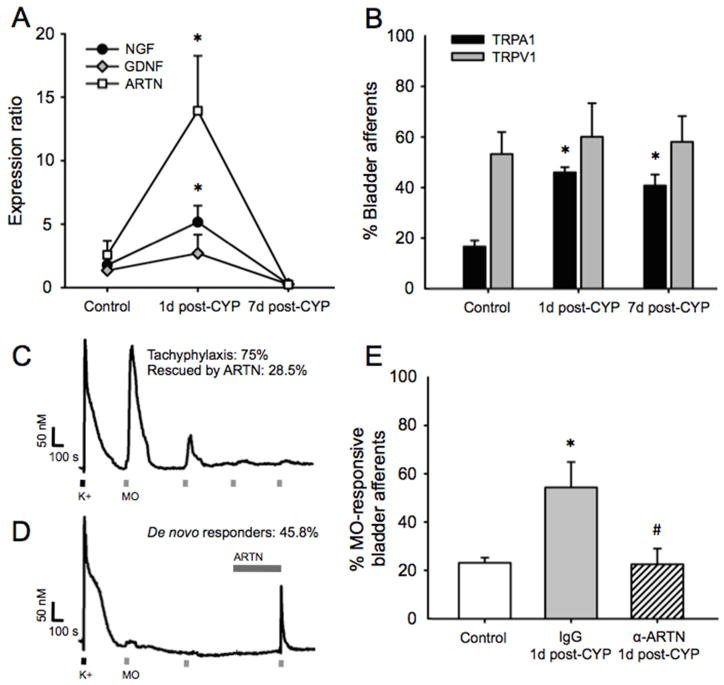Figure 2.
CYP upregulates bladder-derived ARTN mRNA concurrent with upregulation and sensitization of bladder afferent TRPA1. (A) Bladder-derived ARTN and NGF mRNAs were significantly upregulated 1d post-CYP. Expression peaked at >5-fold and 2.5-fold above control levels, respectively. Expression at 7d post-CYP did not differ from control. GDNF mRNA expression was unchanged. (B) Bladder afferent TRPA1 mRNA expression was significantly increased at 1d post-CYP and remained increased at 7d post-CYP. In contrast, CYP had no effect on TRPV1 mRNA expression at either time point. (C) Isolated bladder afferents from naive mice exhibited robust Ca2+ influx to application of 50 mM K+ (black dash). Approximately 15% of these responded to 100 μM MO (gray dash). 75% of MO-responsive afferents exhibited profound desensitization (tachyphylaxis) of TRPA1 channel with repeated MO application (10 min insterstimulus interval). Rescue from tachyphylaxis by ARTN was observed in 28.5% of these neurons (no example shown). (D) ARTN exposure (gray bar; 7 min) was efficacious in recruiting de novo responses to MO in 45.8% of bladder afferents that were initially insensitive to MO. (E) As predicted by afferent TRPA1 mRNA expression, the percentage of bladder afferents exhibiting MO-evoked Ca2+ transients was significantly increased 1d post-CYP relative to controls when mice were pre-treated with IgG (the control for α-ARTN). This CYP-induced increase in MO-responsive afferents was prevented in mice pre-treated with α-ARTN. * indicates p<0.05 versus control, # indicates p<0.05 α-ARTN versus IgG.

